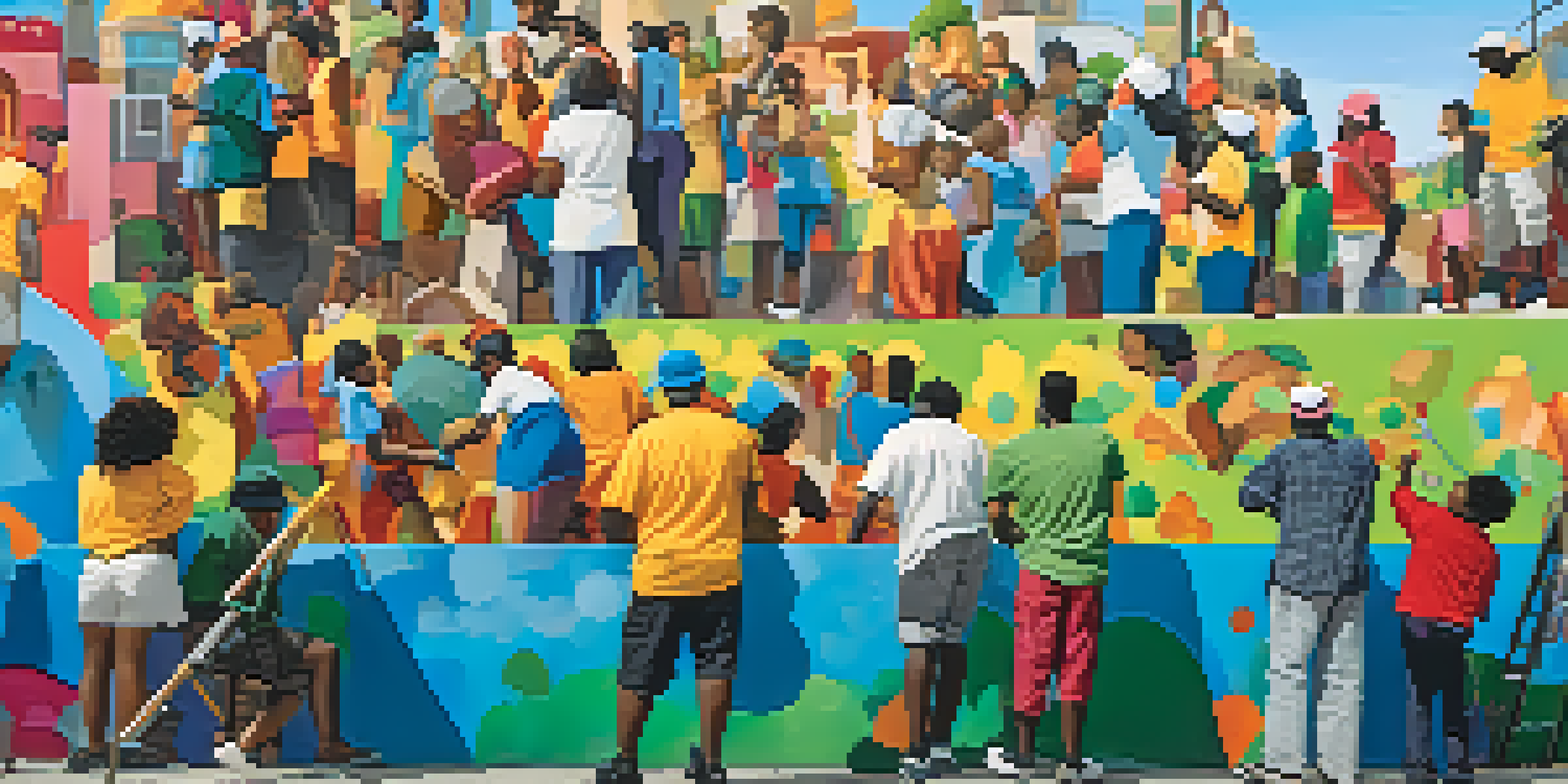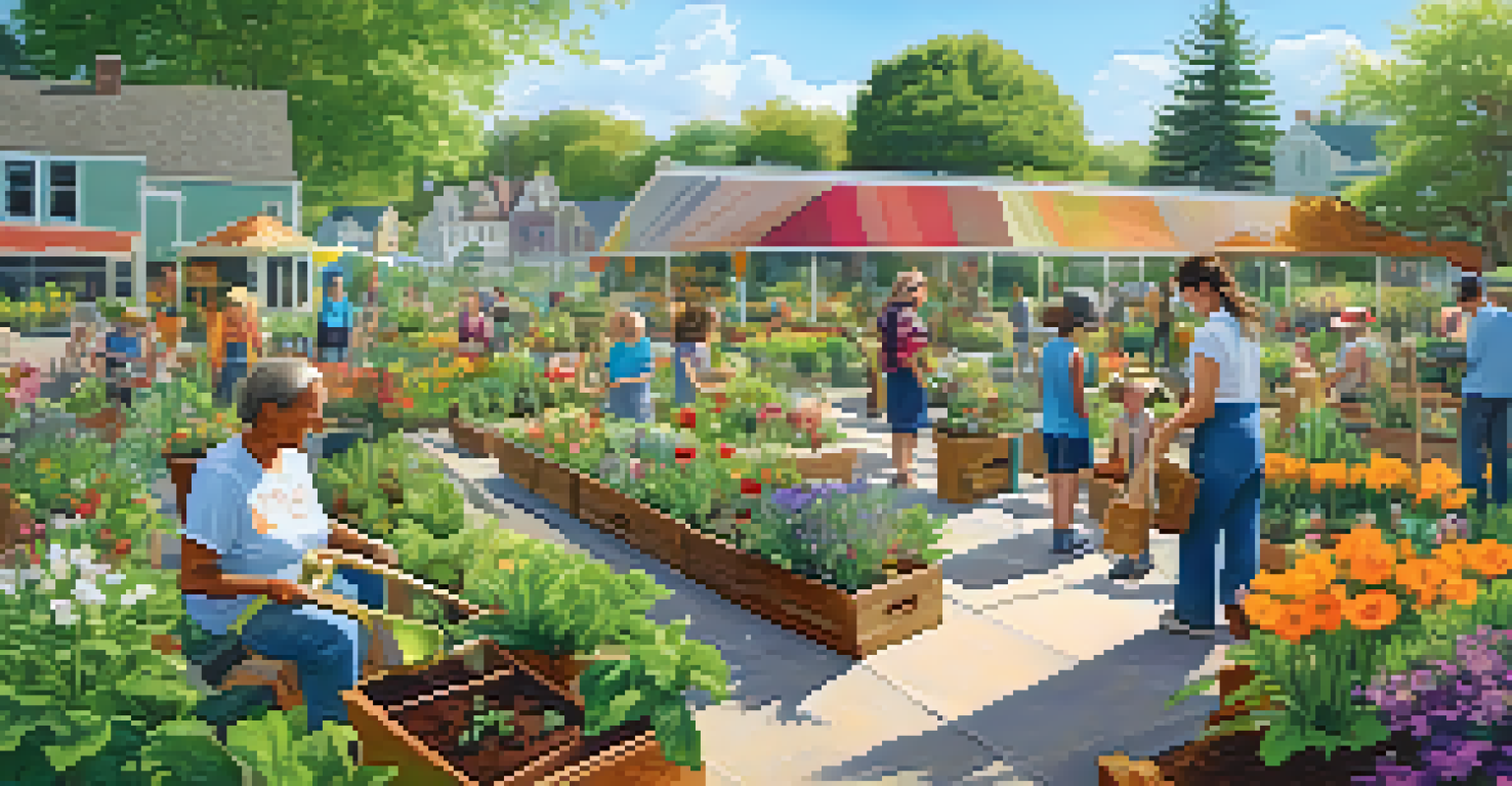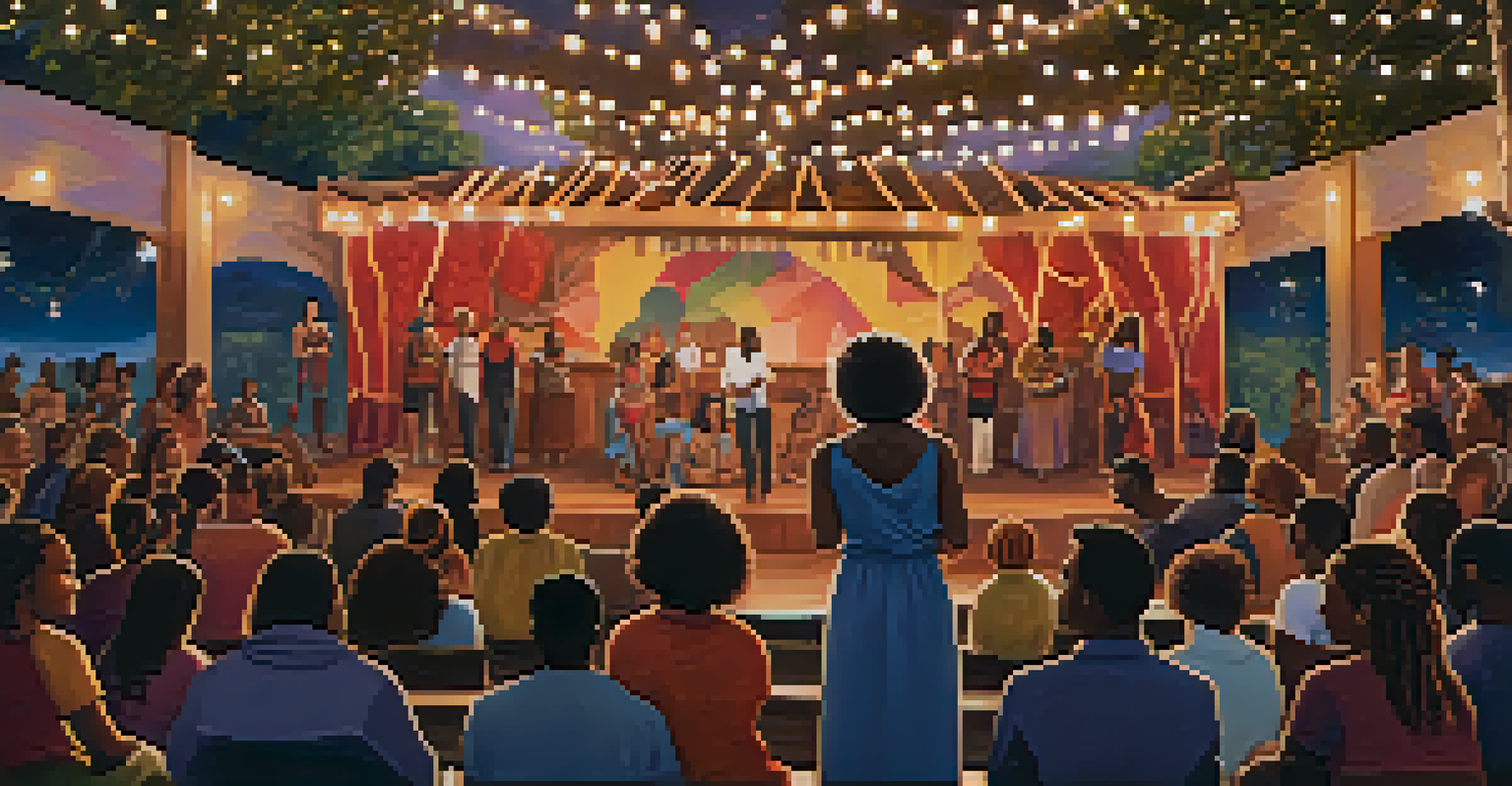Community Art Projects: Bridging Distances Through Creativity

Understanding Community Art Projects and Their Impact
Community art projects serve as a platform for collective creativity, where individuals can come together to express themselves. These initiatives often aim to beautify public spaces, raise awareness about social issues, or simply celebrate local culture. By engaging various community members, these projects help build connections and strengthen neighborhood ties.
Art enables us to find ourselves and lose ourselves at the same time.
Imagine a mural coming to life on a once-blank wall, with local artists and residents painting side by side. This collaboration not only transforms the physical space but also fosters a sense of ownership and pride among participants. In essence, community art projects can turn strangers into friends, creating a shared sense of purpose and belonging.
Moreover, these projects often encourage participation from diverse groups, including different ages, backgrounds, and skill levels. This inclusivity not only enriches the artistic process but also promotes understanding and acceptance within the community. Ultimately, community art projects are a reflection of the unique stories and voices that exist within a locality.
Examples of Successful Community Art Projects
Across the globe, numerous community art projects have made significant impacts. One shining example is the 'Before I Die' wall, where people write their hopes and dreams on a public wall, creating a powerful display of aspirations. This project encourages engagement and conversation, bridging gaps between individuals as they share their dreams with strangers.

Another inspiring initiative is the 'Street Art for Mankind,' which unites artists to create murals that raise awareness about social issues like poverty and inequality. These large-scale artworks not only beautify urban landscapes but also spark dialogue and inspire action within communities. By addressing pressing issues through art, these projects make complex topics more relatable and accessible.
Art Builds Community Connections
Community art projects foster collaboration among diverse individuals, transforming strangers into friends and strengthening neighborhood ties.
In the United States, the 'Art in the Streets' project in Los Angeles showcases the history of street art while highlighting the voices of marginalized communities. This exhibition transformed perceptions of street art from vandalism to a legitimate form of cultural expression. Such projects demonstrate how art can be a catalyst for change, inviting people to rethink their surroundings and the narratives they hold.
How Community Art Projects Foster Inclusivity
Inclusivity is a cornerstone of community art projects, providing a space where everyone can contribute regardless of their background. By inviting participation from various demographic groups, these projects create an environment that values different perspectives and experiences. This, in turn, enriches the creative output, making the final work a true representation of the community.
The role of the artist is to make the revolution irresistible.
Consider a community garden that also serves as an art space. Residents from various age groups and cultures might come together to plant flowers while simultaneously creating art pieces that reflect their heritage. This blending of activities fosters collaboration and understanding, as everyone learns from each other's stories and traditions.
Moreover, the act of creating art together can break down barriers and challenge stereotypes. When individuals work side by side, they forge connections that might not have happened in other contexts. These friendships can lead to lasting change, helping to build a more cohesive and supportive community.
Bringing Awareness to Social Issues Through Art
Art has a unique ability to shine a light on social issues that may otherwise go unnoticed. Community art projects often tackle topics like climate change, inequality, or mental health, providing an avenue for discussion and awareness. Through creative expression, participants can voice their concerns and hopes, sparking important conversations within their communities.
For instance, a community theater project might address local concerns about homelessness through powerful storytelling and performance. By sharing these narratives, the project not only educates the audience but also humanizes those affected by the issue. This approach can lead to increased empathy and a collective motivation to effect change.
Art as a Social Awareness Tool
Through creative expression, community art projects address social issues, sparking important conversations and encouraging empathy within the community.
Additionally, murals or installations that highlight social injustices can serve as constant reminders for community members. These visual representations keep crucial topics at the forefront of public consciousness, encouraging ongoing dialogue and action. In this way, community art projects can become a vital tool for advocacy and change.
The Role of Collaboration in Community Art Projects
Collaboration lies at the heart of successful community art projects. When individuals come together, each person brings their own skills and perspectives, contributing to a richer artistic experience. This cooperative spirit not only enhances the creative process but also builds trust and relationships among participants.
Imagine a group of local musicians, dancers, and visual artists collaborating to create a performance piece that reflects their community's history. Each artist's contribution adds depth and nuance to the final work, showcasing the diverse talents within the group. This synergy often leads to innovative ideas and unexpected outcomes, making the project even more impactful.
Furthermore, collaboration extends beyond the artists themselves. Community members may also engage in the planning and execution of these projects, ensuring that the final product resonates with the broader audience. The result is a shared sense of accomplishment and pride, reinforcing the bonds that hold the community together.
Challenges Faced by Community Art Projects
While community art projects hold immense potential, they are not without challenges. Securing funding can be a significant hurdle, as many projects rely on grants, donations, or sponsorships to bring their creative visions to life. Without adequate financial support, even the most promising ideas can remain just that—ideas.
Additionally, logistical issues such as finding suitable locations, obtaining permits, or coordinating schedules can complicate the execution of these projects. Navigating these obstacles often requires patience and perseverance from organizers and participants alike. However, overcoming these challenges can strengthen the community's resolve and commitment to the project.
Inclusivity Enhances Artistic Output
By inviting participation from various demographic groups, community art projects enrich the creative process and create a true representation of local voices.
Lastly, it's essential to consider the potential for differing opinions within the community. Not everyone may agree on the themes or styles of art being produced. Open dialogue and compromise are crucial in addressing these differences, ensuring that the project remains inclusive and reflective of the community's diverse voices.
The Lasting Impact of Community Art Projects
The impact of community art projects often extends far beyond their immediate execution. These initiatives can leave lasting impressions on neighborhoods, fostering a deeper sense of identity and pride among residents. When people see their contributions reflected in the public space, it reinforces their connection to the community.
Moreover, the skills and relationships built during these projects can lead to future collaborations and initiatives. Participants often feel empowered to continue creating, whether through art or other community-focused efforts. This ripple effect can inspire ongoing engagement and creativity within the community.

In the end, community art projects serve as a testament to the power of collaboration and creativity. By bridging distances through art, they cultivate a sense of belonging and connection, enriching the lives of those involved and the community as a whole.